Crossover games are still a relatively new concept. We've seen cameo appearances by characters from other games, such as Devil May Cry's Dante appearing in the PS2 version of Viewtiful Joe. We've even seen crossover games with characters from other media getting involved. Both Disney and Square did this with the Kingdom Hearts series, and Capcom solidified this with the Marvel Vs. Capcom series. A full-on crossover between video game characters is still rare, but it's starting to become more acceptable after Sega's Fighters Megamix and Capcom partnered up with SNK Playmore for the Capcom Vs. SNK series.
Last year, Capcom, Gust, Idea Factory, Namco Bandai and NIS teamed up for Cross Edge, an RPG that included characters from Ar Tornelico, Atelier Maria, DarkStalkers, Disgaea, Mana Khemia 2 and Spectral Souls. There was no middle ground for the game as players and critics either loved it or hated it passionately. Gust, Idea Factory and NIS have teamed up again to give us another crossover RPG, Trinity Universe. It may have plenty of improvements over its predecessor, but the end result can still polarize RPG fans.
In space, there exists the Netheruniverse, an area where objects can randomly drift in and out. Objects range from small items, such as bunny slippers and old sushi, to large items, like castles, libraries and entire planets. Lately these objects have been crashing into the kingdom, causing destruction and endangering its denizens. A Demon Dog King named Kanata is supposed to turn into a gem that will have stabilize the area around the kingdom of Empyria and prevent more objects from crashing. Since the transformation from Demon Dog King to Demon God Gem will leave him with no freedom, Kanata escapes and tries to live a life of adventure along with his servant Tsubaki. He must also find an alternate way to stop the stray objects from crashing into Empyria. Meanwhile, the Valkyrie Rizelea, after unsuccessfully convincing the king to become an inanimate object, is trying to figure out why so many objects keep drifting in and out of this area. At the same time, she must make sure that her captured Dark Hero, Lucius, is kept on a short leash.
After the opening sequence, players will notice that the game doesn't contain a traditional RPG overworld. Most of your navigation is done in a menu system, but when you're not in a menu, you can go from one object to another to see if any contain stores, dungeons or other items of interest. Once you find an object with something worthwhile, you'll be brought back to the menu and have several different options. An event option lets you play out the related event, which usually leads to a cut scene but sometimes leads to new dungeons or stores. You can also enter shops, save your progress, or anchor an object to prevent it from floating away.
Once inside a dungeon, you can explore and engage in battles against monsters. During exploration, you'll always find treasure chests in the same locations housing the same items. The ground is also littered with items that appear randomly. Players who like to collect everything in a game will have a tough time dealing with the unlimited amount of items that might appear. Each dungeon also has portable shops and save points.
Finally, there's the search power, which lights up paths to important things such as gravity core locations, enemy strongholds, hidden treasures and treasure chests. There are two caveats to the search function, though. First, you can't move when you've activated the search power, and the lines disappear once you take a step, so it's paramount that you plan out a destination after you see the line. Second, there's a limit to how many times you can use the search ability in a dungeon, so you must determine whether you want to use it to find locations or treasure because it must be used again to uncover some of the hidden items once you reach the designated location.
The battle system also plays out differently than traditional RPGs. Initially, it seems simple enough. You have quick, strong and magic attacks, and the Circle button activates another magic ability that changes depending on how long you press it. Attacks are governed by AP, and fast action is required once the first move is executed, or you risk the points dwindling away. You can choose to skip your character's turn, rolling over leftover AP into the next combat opportunity until your maximum of 3x the normal amount has been reached.
From here, the combat system begins to deepen. Provided you have enough AP, you can hit specific button combinations to unleash combos for more damage and consecutive hits. These combos can combine into other combos smoothly if a button combination ends with the same combination of buttons that begin another combo.
After you initiate the attack, you can hit the R1 button to start a Fury Chain and choose another party member to perform a supplementary move. If the right button is hit when the timer is in a specific zone, you can unleash a flurry of combined attack moves. If you find the right sequence of who should attack and when, the entire party gets a bonus once the battle concludes. Raising the combo meter also fills up orbs surrounding the AP meter, and once a certain number of those orbs are filled, you can press R3 to unleash a super attack move or a large HP boost for yourself or the party. The system is deceptively deep, and while it is daunting to use, it ends up being very powerful.
Trinity Universe offers two different characters, essentially giving the player two different games that happen to take place at the same time and in the same setting. The main story is told from two different perspectives, but the differences go beyond character attributes. Because the stories are different enough, the rest of the supporting cast will appear at different times depending on your active character. Etna and the Prinnies, for example, appear pretty early on in Kanata's story but appear much later for Rizelea.
The biggest difference is in how the party will strengthen each character's abilities. Choosing Kanata automatically puts Tsubaki in your party, who has the ability to conjure monsters from the souls you find in dungeons and from defeated monsters. Once a monster is created, you head over to the Monster Coliseum to fight it. Defeating it gives your party clear souls, which are used to strengthen their parameters.
Rizelea's system works differently in that hers is powered by mana. Going to battle with particular managraphics (drawings on weapons that boost weapon and player stats) will unleash specific mana types when monsters are defeated. Back at the shop, particular mana will be sealed into meteorite stones. Each character has a basic planetary ring, though other ring configurations can also be obtained, and this is where you place the meteorite to obtain parameter boosts. The meteorite types can provide even more boosts and effects, depending on where they are in the planetary ring configuration. Meteorites closer to the ring core will have boosted abilities while those further away from the core will gain other effects, such as immunity to certain enemy spells.
The story quickly becomes one of the most enjoyable aspects of the game, largely because of the writing. Very rarely will a game end up being a parody of itself, making fun of the very things that define its genre. For example, encountering the first save point in the first dungeon will bring up a tutorial informing you that this is a common item in Japanese RPGs and that it will always indicate a boss fight nearby. Kanata is often found wanting to do things just so he can be like an anime hero while Tsubaki complains that the only reason she wears a kimono is because Japanese women look good wearing them. Rizelea has moments where she calls herself a noob, Lucius often talks out loud about his plans for world domination despite being forcibly indentured by Rizelea, and the tutorials often come in like radio shows.
As expected, the Disgaea characters provide a good amount of humor, especially the Prinnies who often want to slack off for food or a drink instead of finding treasure for their boss Etna. There are even a few instances of the fourth wall being broken, with good effect. The last RPG to do all of that in recent memory was the Xbox Live indie game, Breath of Death VII: The Beginning. To see the same type of humor coming from a larger developer — and see it being done well — certainly speaks volumes about the writers' skill with the game translation and localization.
While Trinity Universe is very enjoyable, it is not perfect. The first issue is that a majority of the objects floating into and out of the Netheruniverse isn't very valuable. It is humorous to see things like bunny slippers and train cars float in and out of the area, but when you use the search ability on those objects and get nothing in return, you quickly realize that the only objects worth paying attention to are normal buildings that have been dislodged from their lands.
Another complaint that can be levied against the game has to do with the numerous cut scenes. It's not that the scenes aren't enjoyable to watch, but they are plentiful, especially in the first few chapters, where they are giving you the story and also teaching you the game mechanics. A good portion of your interaction with the game will involve hitting the X button to move the dialogue forward. While you can hit the Start button to make the scene move automatically, the tutorials make you progress through them manually. Random battles also become an issue because of their frequency. It only takes a few steps before combat is initiated, and once it concludes, another fight can occur a few seconds later. It can be prevented if you find the dungeon's hunting spot and defeat the hordes of enemies, but even then, the immunity from random battles doesn't last very long. Thankfully, it doesn't occur when you escape from the dungeon as it floats away, but it does get annoying when all you want to do is collect items.
Finally, the camera does a good job most of the time, but it gets problematic in tight spaces where you have to fight to get the right angle. Standing still to fix the camera doesn't immediately call for a random battle to occur, but it does mean it'll take fewer steps before one is initiated.
Trinity Universe does a much better job of using the PS3's processing power than Cross Edge did, but it still doesn't feel like it is tapping into the system's potential. During battle, the characters and monsters are made of polygons instead of low-resolution sprites, but don't expect the models to look like something from anything newer than the PS2. The same goes for the animations, which look fine but won't really amaze you. The environments are a little different. The architecture of the dungeons doesn't feel any different from most of the RPGs on the PS2, but the color palette has certainly expanded. Every dungeon has a plethora of particle effects at every step, from simple firefly-like lights coming from the ground to holographic flowers and sakura petals. Although it felt a bit superfluous, it doesn't slow down the game's performance at all.
Those who are familiar with the "visual novel" games or most RPGs from Japan will be familiar with the cut scene style. A still portrait of the characters is used, and the dialogue is displayed and spoken. Any change in expression or action is reflected in the character portrait. The same cut scene system is in play, but the developers have decided to throw in some animation. Character lips will move as they speak, and every on-screen character will exhibit movement to show that they're at least breathing.
Fans of quirky Japanese RPGs should already know what to expect from the sound in Trinity Universe. The music is very jubilant and bouncy, much like a typical sci-fi comedy anime. The theme song is quite nice, though you might tire of it once you realize that it plays every time you go to the Netheruniverse map and when the chapter draws to a close. Considering how often you'll visit the Netheruniverse map, you'll hear the song more often than you'd like. The sound effects from attacks and magic are nothing special. They function well enough and don't sound muted, but they don't stand out, either.
The trend of making Japanese games dual-language releases continues here, with the inclusion of both Japanese and English voices. Both voice sets sound good, and while both have a few weaker performances, the overall work is good, and fans of either language set won't complain too much. The characters don't have too many different things to say during combat, but they speak often when exploring dungeons, adding to the lighthearted nature of the game with their quips about being hungry or asking why there's so much junk in the area.
An odd thing about the voices is that they don't play all of the time. For example, during one of Rizelea's missions to get some Rune Water, a cut scene played with the large, barely animated portraits that was fully voiced. A few moments later, another cut scene with the same large, barely animated portraits played, but no voices accompanied it. A subsequent cut scene had the voices again. The combo tutorial was fully voiced one minute but went completely silent the next. This might be an issue with our review build, but I wouldn't be surprised if this problem were also in the retail version.
Trinity Universe is certainly a much better effort at a crossover RPG than Cross Edge. The graphics have improved, the story line is amusing but moves along quite well, and the battle system remains deep without resorting to being too complex to grasp. Having two different plots with different character sets also adds to the length of the game without it feeling too artificial and unnecessary. Trinity Universe is a good choice for RPG fans who don't mind a heavy dose of humor in their games, and it'll keep you entertained for quite a while.
Score: 8.0/10
More articles about Trinity Universe


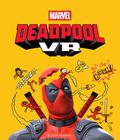
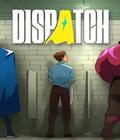
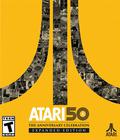
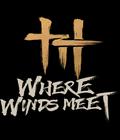





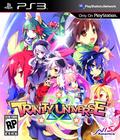 Trinity Universe is a crossover RPG between characters from Nippon Ichi Software and Gust. Offering different story arcs, Trinity Universe will feature two scenarios, Megami and Mao, depending on which publisher or character you prefer.
Trinity Universe is a crossover RPG between characters from Nippon Ichi Software and Gust. Offering different story arcs, Trinity Universe will feature two scenarios, Megami and Mao, depending on which publisher or character you prefer.





































